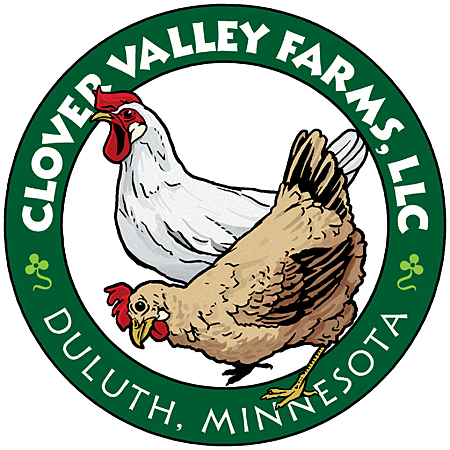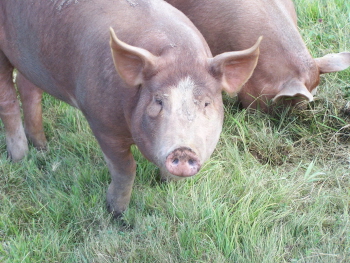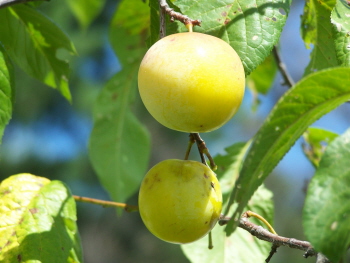Farm Description
Clover Valley Farms sits about 20 miles north of Duluth and about 4 miles from Lake Superior. Cindy and Jeff own 25 acres, of which 8-10 acres are in production. Much of the property is forested, while the remainder is made up of old pastures, orchards, and the homestead (see aerial photo, below). Cindy and Jeff can envision using most, if not all, of the property for farming purposes eventually, though they do not anticipate it would involve clearing the forest. The hogs, for example, could be sent to the forested areas to forage temporarily. Cindy and Jeff currently have about one acre of forest enrolled in the Wildlife Habitat Incentives Program (WHIP) and will be planting a cover crop and native fruit trees such as highbush cranberry, red-osier dogwood, juneberry, grey dogwood, and pin cherry.

Educator’s Perspective: Resource Tip WHIP is just one of several federal cost-share programs that can help farmers implement conservation activities on their land. The Minnesota Department of Agriculture’s Conservation Funding Guide provides information about opportunities in Minnesota, and many are relevant nationwide. Until recently, U.S. conservation policy has focused on “land retirement” programs such as the well-known Conservation Reserve Program. Recent trends, however, indicate an increasing emphasis on “working lands” conservation through initiatives such as the Conservation Stewardship Program. By implementing conservation practices on land that is in agricultural production, more efficient and sustainable land use is possible. |
Many farmers would balk at the idea of farming in Minnesota’s northerly reaches, but Jeff and Cindy feel there are unique advantages. They both like the seasonal nature of farming there and the lulls provided by the region’s climate. They also appreciate that the farm is located out of the range of two of the most destructive pests that plague other fruit tree growers in Minnesota (plum curculio and codling moth; see Production > Production Methods > Apples & Other Fruits). Cindy and Jeff also value the thriving community of sustainable farmers and local food advocates in the Duluth area (see also Farm Business > Professional Development). The farm’s latitude limits the number of modern fruit varieties that can be planted there, but Jeff and Cindy have found that there are more than enough locally developed heritage varieties to grow a diversity of high-quality fruits. For Jeff and Cindy, heritage varieties are those that are about 100 years old or more, are not patented, and have some historic significance to the region. |
The primary disadvantage of the farm’s location is the heavy soil. Cindy and Jeff must deal with a 40-foot layer of unstructured red clay, the remnant plain of a glacial lake that existed during the last glaciation (about 11,000 years ago). Before planting apple trees, these poorly drained soils require thoughtful site selection to provide good air flow, water drainage, and sun aspect. The soils also need to be worked for a year or more to increase friability and organic matter.
The location of Clover Valley Farms is a bit of bad luck, considering that just a quarter-mile up the road, the clay transitions into glacial till and loamy soils! Cindy and Jeff emphasize that if you are looking at buying land for farming, it pays to do your homework on the soil types of potential properties and to understand the opportunities or obstacles of those soil types.
Educator’s Perspective: Resource Tip Farmers seeking land need to know what kind of soil they’ll be dealing with. To get a map of soil types for a specific property, contact the local Soil and Water Conservation District or USDA Natural Resources Conservation Service. Click here for an office locator. Soil data are also available through the Web Soil Survey. Once farming is underway, SARE's1 Building Soils for Better Crops is an important reference. This one-of-a-kind, practical guide to ecological soil management was updated in 2010. 1Sustainable Agriculture Research and Education Program of the USDA. |
 |
 |


